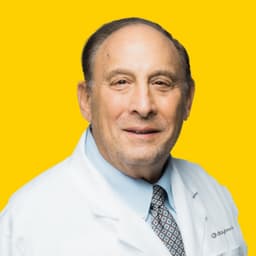Sleep Health and Safety: Drowsy Driving

Dr. Martin Hopp MD, ENT
Sleep is often treated as optional in today's fast-paced world, but insufficient rest can have serious consequences. Drowsy driving is a hidden epidemic, contributing to thousands of preventable crashes every year. Fatigue behind the wheel reduces focus, slows reaction times, and impairs judgment in ways that can be as dangerous as driving under the influence. But understanding the risks, causes, and warning signs of drowsy driving can be an important first step toward saving lives.
How Common Is Drowsy Driving?

Drowsy driving is more widespread than many people realize. The National Highway Traffic Safety Administration estimates that hundreds of thousands of crashes annually involve a fatigued driver, resulting in thousands of deaths and tens of thousands of injuries. Young adults, shift workers, long-haul truck drivers, and health professionals are particularly vulnerable due to irregular schedules and extended work hours. Surveys indicate that nearly one in three adult drivers admit to driving while sleepy, while about one in 25 report actually falling asleep at the wheel in the past month. Because fatigue often goes unrecognized or unreported, the true number of drowsy-driving incidents is likely far higher than that.
Why Is Drowsy Driving Dangerous?
Driving while fatigued impairs cognitive function similarly to alcohol. It can even cause microsleeps, involuntary episodes of sleep that last only a few seconds. A microsleep may be short, but a few seconds is plenty of time to drift out of a lane, miss a stop sign, or fail to respond to a sudden hazard. Fatigue slows reaction times, reduces vigilance, and diminishes the ability to make good decisions. Even moderate sleep deprivation, such as getting only five or six hours of rest, can significantly impair attention, coordination, and situational awareness, making the road considerably more dangerous for both the driver and others.
What Causes Drowsy Driving?

Several factors contribute to drowsy driving. Lack of sufficient sleep is the most obvious, but irregular sleep schedules, long workdays, and extended periods of monotonous driving also can all lead to fatigue. Sleep disorders, particularly sleep apnea, are a major contributor as well. Sleep apnea causes repeated interruptions in breathing during sleep, preventing the body from achieving deep, restorative rest. Individuals with sleep apnea may wake dozens of times per night without even realizing it, leaving them chronically exhausted and prone to dangerous lapses in alertness while driving. Medications that cause drowsiness, alcohol consumption, and nighttime driving conditions can further exacerbate the risk.
What Are Signs That You Should Stop Driving to Rest?
Fatigued drivers may experience frequent yawning, heavy eyelids, difficulty keeping their head up, or drifting between lanes. Missing traffic signals, having difficulty focusing, or finding themselves daydreaming while driving are also signals that rest is urgently needed. Emotional symptoms such as irritability, impatience, or restlessness can also indicate that fatigue is affecting cognitive function. If any of these symptoms appear, the safest course of action is to pull over and rest, even for just a brief nap.
How Can You Avoid Drowsy Driving?

Preventing drowsy driving begins with prioritizing sleep. Adults generally need seven to nine hours of rest per night, and keeping a consistent sleep schedule reinforces the body's natural rhythms. Those with sleep apnea or other sleep disorders should seek diagnosis and treatment, as therapies such as CPAP machines or oral devices can dramatically improve daytime alertness and reduce accident risk. Planning regular breaks during long trips, sharing driving responsibilities, and avoiding driving late at night or during typical sleep hours can help maintain alertness. Caffeine can also offer temporary stimulation, but it's no substitute for proper rest, and relying on it alone can provide a false sense of security.
Additional Resources
- Dangers of Drowsy Driving
- How to Avoid Drowsy Driving
- Stay Awake Behind the Wheel
- Crash Risk Higher for Drivers With Untreated Sleep Apnea
- Study Finds Breaks Help Drowsy Drivers
- How to Stay Awake Behind the Wheel
- Sleep Awareness Quiz: Are You Sleep-Deprived?
- 30-Second Sleep Apnea Assessment
- Survey Highlights Dangers of Drowsy Driving
- Drowsy Driving Risks and Prevention
- Keeping Sleepy People Off of the Road
- Dangers of Driving While Drowsy
- Affordable Sleep Apnea Treatment
- Drowsy Driving Tips
- Sleepiness and Driving
- At-Home Sleep Test
- Teen Drowsy Driving
- Drowsy Driving: Asleep at the Wheel
